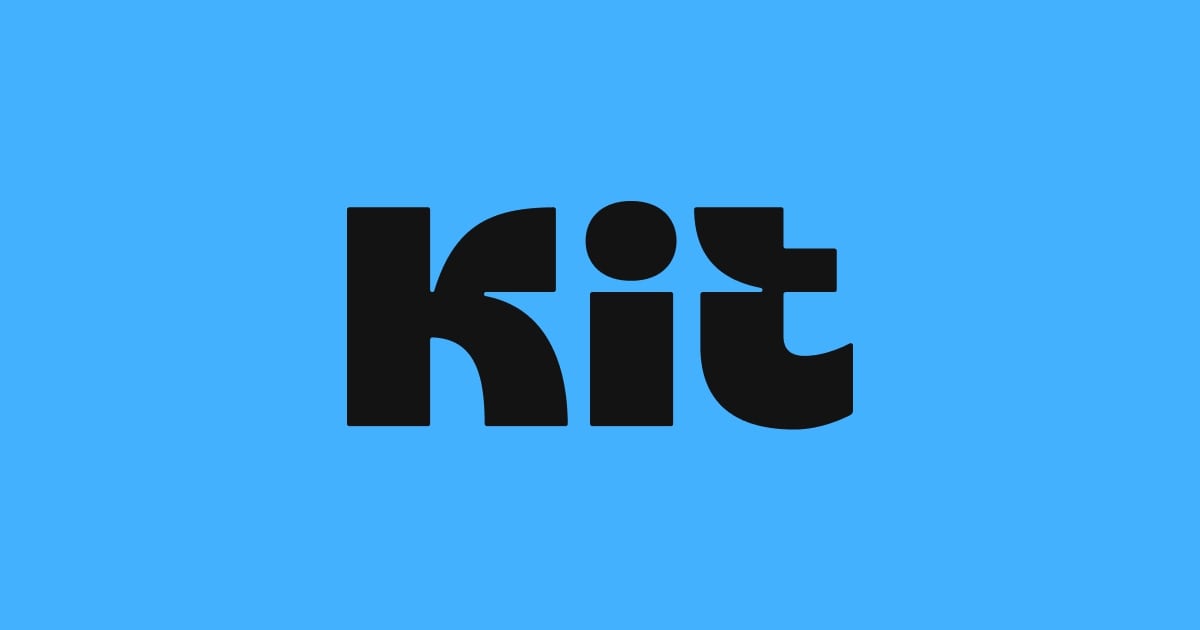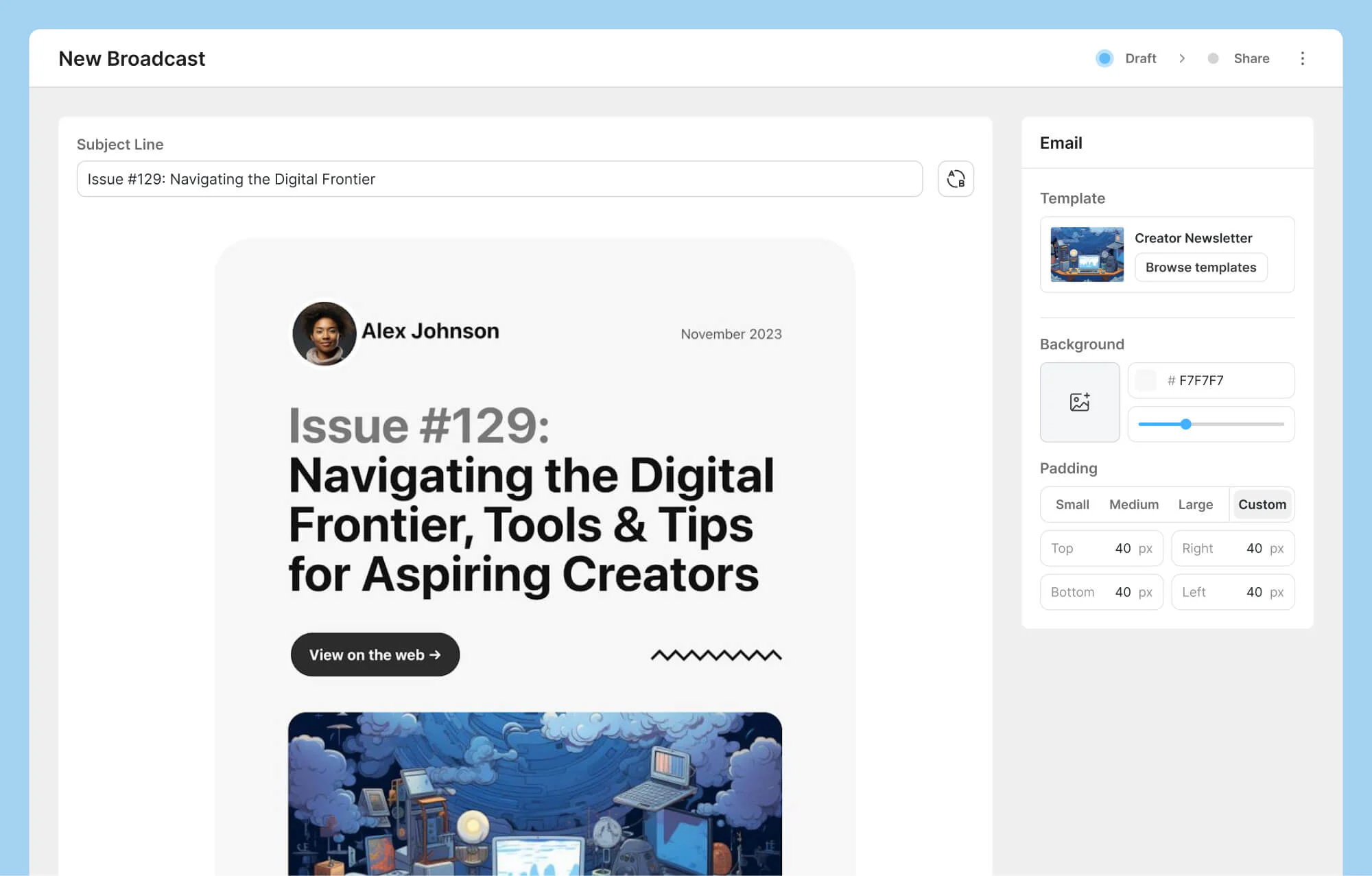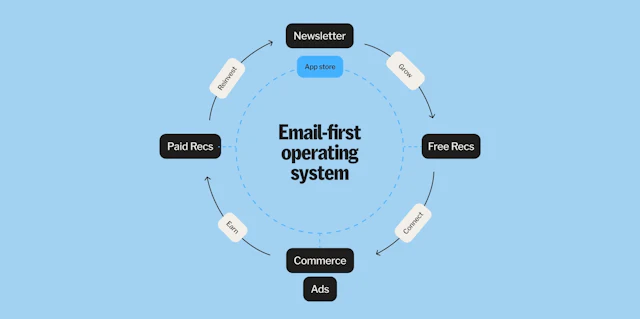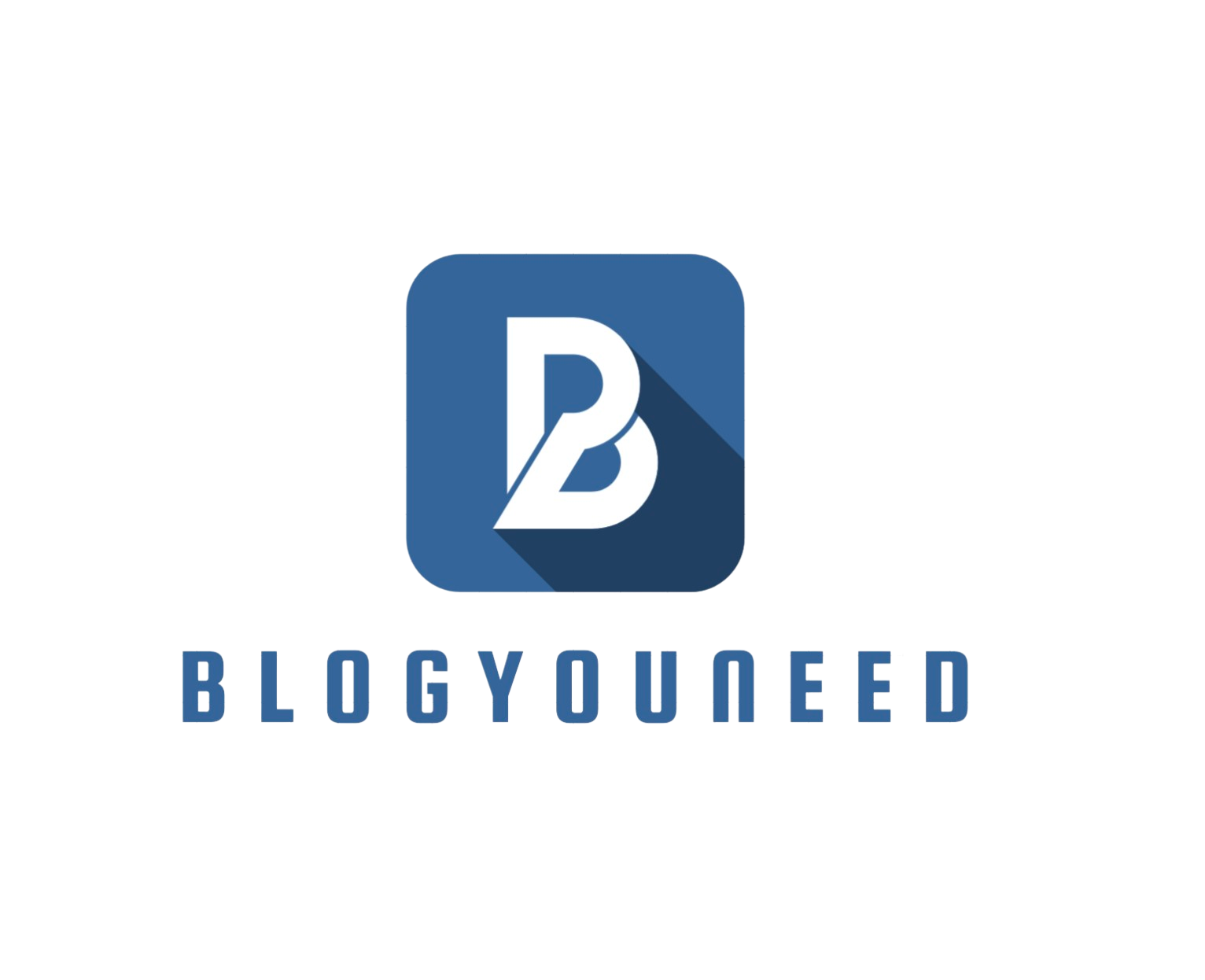
Table of Contents
When you’re building an online presence—whether through blogging, YouTube, newsletters, or digital products—the hardest part isn’t always creating the content. It’s building an audience, connecting with them consistently, and turning that attention into a sustainable business.
That’s where Kit (formerly ConvertKit) comes in. Unlike generic email marketing tools that feel like they were built for corporate marketers, Kit is designed specifically for creators like you and me—bloggers, writers, YouTubers, podcasters, musicians, and even coaches who want to monetize their skills.
In this deep-dive review, I’ll share:
- What Kit is and why it matters
- How it helps you grow your audience
- Practical examples of using Kit in a creator workflow
- Key features explained in plain English
- Pricing and plans
- My personal verdict on whether it’s worth it
If you’re short on time and just want to try it out, you can grab a 14-day free trial here: Start your Kit journey (no credit card required).
What is Kit (ConvertKit)?
Kit, which you may know by its earlier name ConvertKit, is an email-first operating system for creators.
But what does that mean?
Think of Kit as more than just an email service. Yes, it lets you send emails, grow your list, and automate workflows—but it also helps you sell products, run paid newsletters, accept tips, and build relationships with your audience.
It was founded in 2013 by Nathan Barry, a designer and blogger himself, who wanted a tool that didn’t feel bloated or corporate but instead felt like a creator-friendly platform. Over the years, it has evolved into a robust platform trusted by thousands of creators worldwide.
Why Email Marketing Still Matters in 2025
A lot of people ask: “Do I really need email? Can’t I just grow on social media?”
Here’s the truth: social media is rented land. Platforms like Instagram, YouTube, and TikTok are great for visibility, but you don’t own your followers. An algorithm change or account suspension can erase years of hard work overnight.
Email is different. When someone joins your email list, you own that relationship. No one can take it away. That’s why successful creators—from big names like James Clear to small niche bloggers—rely heavily on email as their primary distribution channel.
Kit makes that process painless. It’s built so you don’t need to be a marketing pro to start building your audience and engaging with them.
Key Features of Kit (Explained Simply)
Let’s break down the features, but instead of a boring checklist, I’ll explain them in a way you can actually visualize.
1. Landing Pages & Forms

Imagine you create a free PDF guide for your audience, like “10 Ways to Boost Productivity.” You need a landing page to collect emails.
With Kit, you can spin up a professional-looking landing page in minutes—no need for a designer. You get pre-built templates, customizable branding, and even custom domains if you want it to match your website.
Example: A travel blogger can create a form to collect emails from readers who want “The Ultimate 7-Day Europe Packing List.”
2. Email Campaigns & Broadcasting

Once people join your list, you need to stay in touch. Kit gives you a visual email editor that’s clean and distraction-free.
You can:
- Write plain-text emails (which actually perform better for creators).
- Add images, polls, and conditional content.
- Segment subscribers with tags (so you only send relevant content).
Example: A musician can tag fans based on which album they downloaded and send them personalized updates.
3. Automations

Here’s where Kit shines. You don’t need to manually send every email.
With visual automations, you can build sequences like:
- Welcome series for new subscribers.
- Drip campaigns for a course.
- Product launch countdowns.
Example: A course creator can set up a 7-day sequence that warms up new subscribers before pitching their paid course.
4. Monetization Tools
This is where Kit stands apart from most email providers. You can:
- Launch a paid newsletter.
- Sell digital products (ebooks, guides, templates).
- Accept tips from fans.
- Run sponsored recommendations.
Example: A newsletter writer can charge $5/month for premium content directly inside Kit. No external tools needed.
5. Integrations & App Store

Kit connects with tools you already use—WordPress, Shopify, Teachable, Zapier, and many more.
So, if you’re running a blog on WordPress, you can easily connect Kit forms to capture leads.
Who Should Use Kit?
Kit isn’t built for everyone—it’s specifically for creators. Here are some who’ll benefit the most:
- Bloggers & Writers – Build an audience, send newsletters, monetize with digital products.
- YouTubers & Podcasters – Capture email subscribers from your content, promote merch or episodes.
- Coaches & Course Creators – Nurture leads with automated sequences and sell programs.
- Artists & Musicians – Announce releases, sell albums, and engage with superfans.
If you’re just running a local coffee shop with a loyalty program, Kit might be overkill. But if you’re building a personal brand or digital business, Kit is a perfect fit.
Kit Pricing (Is It Worth It?)

One of the best parts is that Kit offers a 14-day free trial to test everything out:
Claim your free trial here.
After that, pricing depends on your subscriber count. As of 2025:
- Free Plan (up to 1,000 subscribers) – Includes landing pages, email broadcasts, and the ability to sell digital products.
- Creator Plan – Starts at $9/month when billed annually. Unlocks automations, integrations, and advanced features.
- Creator Pro Plan – For scaling businesses, includes advanced reporting, team accounts, and priority support.
Compared to tools like Mailchimp or ConvertFlow, Kit feels cheaper and more creator-centric, especially since monetization is built in.
Pros and Cons of Kit
No tool is perfect, so here’s a balanced look.
Pros:
- Built specifically for creators
- Easy-to-use visual automations
- Monetization tools built-in
- Clean email editor
- Free migration service for large lists
- Excellent support and community
Cons:
- Not ideal for corporate marketers with huge CRMs
- Some templates feel a bit basic (though customizable)
Real-Life Example: How I’d Use Kit as a Blogger
Let’s say I’m running a WordPress blog about productivity and remote work. Here’s how I’d use Kit step by step:
- Create a landing page offering a free PDF: “10 Productivity Hacks for Remote Workers.”
- Set up an automation so new subscribers receive:
- Day 1: Thank you + free guide.
- Day 3: A blog post recommendation.
- Day 5: A tip about time blocking.
- Day 7: An invitation to join my paid course.
- Send a weekly broadcast with new blog updates.
- Add a paid digital product like a $29 Notion template for remote workers.
This way, I’m building trust, growing my list, and generating income—on autopilot.
Final Verdict: Should You Use Kit?
If you’re a creator in 2025 who wants to:
✅ Grow your email list
✅ Build a deeper connection with your audience
✅ Automate without complexity
✅ Monetize directly from your emails
…then Kit is hands-down one of the best platforms available.
It’s simple, creator-first, and gives you the tools to turn your audience into a sustainable business.
Start your 14-day free trial here and see how Kit can transform your creator journey.
